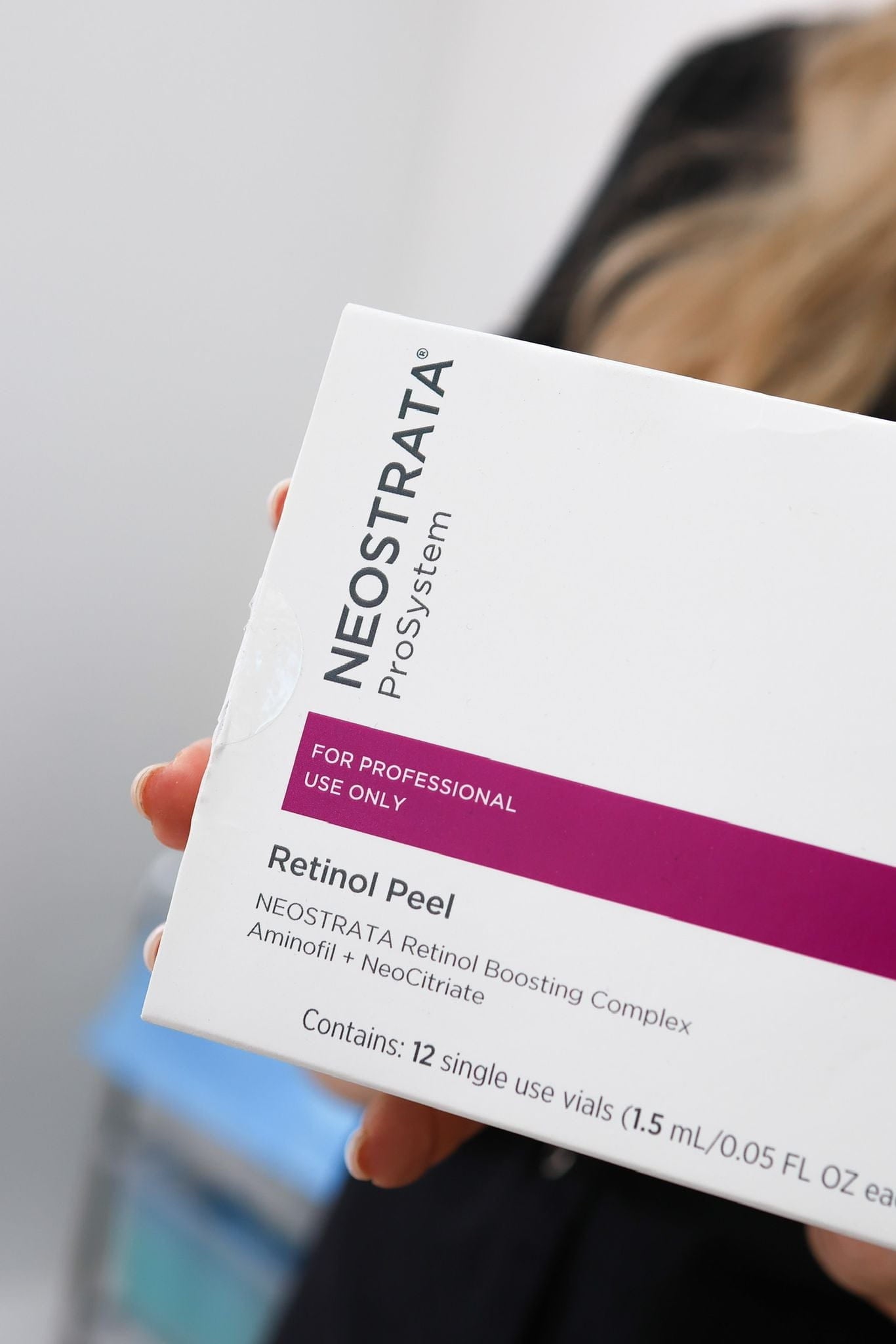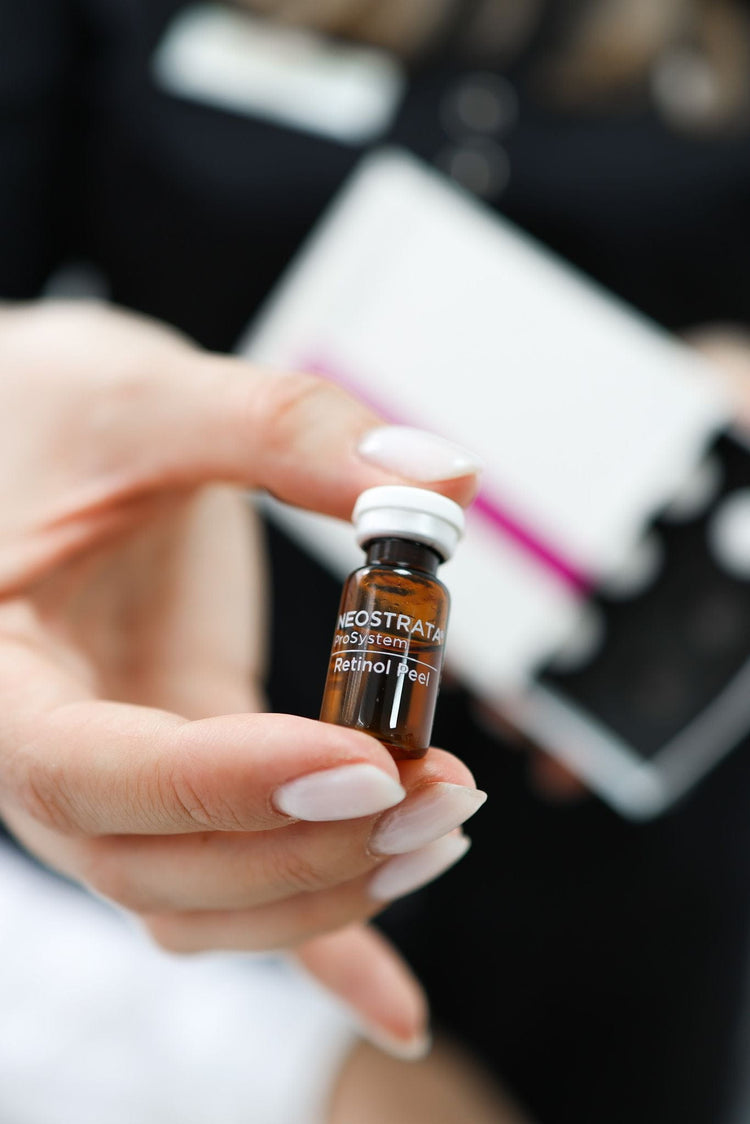Smoothing Rough Skin
Achieving smooth, even-textured skin can be a common goal, and retinol peels are often touted as a solution for improving skin texture. Retinol, a derivative of vitamin A, has been recognized for its ability to increase cell turnover and stimulate collagen production.
In Kingston Upon Thames, like many other locations, skincare enthusiasts seek ways to enhance their complexion. Retinol peels are increasingly popular, with clinics and spas offering this treatment as a way to address rough skin, fine lines, and uneven tone.
Reducing Fine Lines and Wrinkles
Achieving smooth, even-textured skin can be a common goal, and retinol peels are often touted as a solution for improving skin texture. Retinol, a derivative of vitamin A, has been recognized for its ability to increase cell turnover and stimulate collagen production.
In Kingston Upon Thames, like many other locations, skincare enthusiasts seek ways to enhance their complexion. Retinol peels are increasingly popular, with clinics and spas offering this treatment as a way to address rough skin, fine lines, and uneven tone.
But does a retinol peel truly improve skin texture?
- Retinol can help exfoliate the skin, revealing smoother skin underneath.
- Increased collagen production can plump up the skin, reducing the appearance of fine lines and wrinkles.
- By addressing uneven pigmentation, retinol peels can contribute to a more even skin tone.
Minimizing Pore Size
While retinol peels show promise in improving skin texture, it’s important to understand that results vary from person to person. Factors like individual skin type, the severity of skin concerns, and the practitioner’s expertise play a role in determining the effectiveness of the treatment.

It’s essential to consult with a qualified dermatologist or esthetician to determine if a retinol peel is suitable for your skin type and concerns. They can assess your skin’s condition and advise on the appropriate treatment plan, including the concentration of retinol used and the number of sessions required.
Improving Skin Tone
Retinol peels have gained popularity as a potential solution for improving skin texture. Retinol, a derivative of vitamin A, is known for its ability to exfoliate the skin, stimulate collagen production, and address uneven pigmentation.
The exfoliating action of retinol helps to remove dead skin cells, revealing smoother skin underneath. Increased collagen production can plump up the skin, reducing the appearance of fine lines and wrinkles. By targeting pigmentation irregularities, retinol peels can contribute to a more even skin tone.
Consultation with a Dermatologist
Retinol peels have gained popularity as a potential solution for improving skin texture.
Retinol, a derivative of vitamin A, is known for its ability to exfoliate the skin, stimulate collagen production, and address uneven pigmentation.

The exfoliating action of retinol helps to remove dead skin cells, revealing smoother skin underneath. Increased collagen production can plump up the skin, reducing the appearance of fine lines and wrinkles. By targeting pigmentation irregularities, retinol peels can contribute to a more even skin tone.
However, it’s important to note that individual results may vary. Factors like skin type, the severity of skin concerns, and the expertise of the practitioner all influence the outcome.
Before undergoing a retinol peel, consulting with a qualified dermatologist or esthetician is essential. They can assess your skin’s condition, determine if a retinol peel is suitable for you, and advise on the appropriate treatment plan, including the concentration of retinol used and the number of sessions required.
Pre-Treatment Skincare Routine
Retinol peels have gained popularity as a potential solution for improving skin texture.
Retinol, a derivative of vitamin A, is known for its ability to exfoliate the skin, stimulate collagen production, and address uneven pigmentation.
The exfoliating action of retinol helps to remove dead skin cells, revealing smoother skin underneath. Increased collagen production can plump up the skin, reducing the appearance of fine lines and wrinkles. By targeting pigmentation irregularities, retinol peels can contribute to a more even skin tone.
However, it’s important to note that individual results may vary. Factors like skin type, the severity of skin concerns, and the expertise of the practitioner all influence the outcome.
Before undergoing a retinol peel, consulting with a qualified dermatologist or esthetician is essential. They can assess your skin’s condition, determine if a retinol peel is suitable for you, and advise on the appropriate treatment plan, including the concentration of retinol used and the number of sessions required.
The Peel Application Process
Achieving smooth, even-textured skin can be a common goal, and retinol peels are often touted as a solution for improving skin texture. Retinol, a derivative of vitamin A, has been recognized for its ability to increase cell turnover and stimulate collagen production.
In Kingston Upon Thames, like many other locations, skincare enthusiasts seek ways to enhance their complexion. Retinol peels are increasingly popular, with clinics and spas offering this treatment as a way to address rough skin, fine lines, and uneven tone.
But does a retinol peel truly improve skin texture?
- Retinol can help exfoliate the skin, revealing smoother skin underneath.
- Increased collagen production can plump up the skin, reducing the appearance of fine lines and wrinkles.
- By addressing uneven pigmentation, retinol peels can contribute to a more even skin tone.
While retinol peels show promise in improving skin texture, it’s important to understand that results vary from person to person. Factors like individual skin type, the severity of skin concerns, and the practitioner’s expertise play a role in determining the effectiveness of the treatment.
It’s essential to consult with a qualified dermatologist or esthetician to determine if a retinol peel is suitable for your skin type and concerns. They can assess your skin’s condition and advise on the appropriate treatment plan, including the concentration of retinol used and the number of sessions required.
Expected Side Effects
Retinol peels have gained popularity as a potential solution for improving skin texture.
Retinol, a derivative of vitamin A, is known for its ability to exfoliate the skin, stimulate collagen production, and address uneven pigmentation.
The exfoliating action of retinol helps to remove dead skin cells, revealing smoother skin underneath. Increased collagen production can plump up the skin, reducing the appearance of fine lines and wrinkles. By targeting pigmentation irregularities, retinol peels can contribute to a more even skin tone.
However, it’s important to note that individual results may vary. Factors like skin type, the severity of skin concerns, and the expertise of the practitioner all influence the outcome.
Before undergoing a retinol peel, consulting with a qualified dermatologist or esthetician is essential. They can assess your skin’s condition, determine if a retinol peel is suitable for you, and advise on the appropriate treatment plan, including the concentration of retinol used and the number of sessions required.
Post-Peel Care Instructions
Following a retinol peel, it’s crucial to prioritize proper skincare to promote healing and optimize results.
Avoid sun exposure as much as possible, and always use broad-spectrum sunscreen with an SPF of 30 or higher when outdoors. Retinol can increase your skin’s sensitivity to the sun.
Gentle cleansing is essential. Use a mild cleanser formulated for sensitive skin and avoid harsh scrubs or exfoliants. Pat your skin dry instead of rubbing it.
Moisturize regularly with a hydrating cream or serum containing hyaluronic acid to keep your skin hydrated.
Avoid using other products that can irritate the skin, such as retinoids, alpha-hydroxy acids (AHAs), or benzoyl peroxide, until your skin has fully recovered.
If you experience any redness, irritation, or discomfort, discontinue use of any new products and consult with a dermatologist.
Follow-up Appointments
Achieving smooth, even-textured skin can be a common goal, and retinol peels are often touted as a solution for improving skin texture. Retinol, a derivative of vitamin A, has been recognized for its ability to increase cell turnover and stimulate collagen production.
In Kingston Upon Thames, like many other locations, skincare enthusiasts seek ways to enhance their complexion. Retinol peels are increasingly popular, with clinics and spas offering this treatment as a way to address rough skin, fine lines, and uneven tone.
But does a retinol peel truly improve skin texture?
- Retinol can help exfoliate the skin, revealing smoother skin underneath.
- Increased collagen production can plump up the skin, reducing the appearance of fine lines and wrinkles.
- By addressing uneven pigmentation, retinol peels can contribute to a more even skin tone.
While retinol peels show promise in improving skin texture, it’s important to understand that results vary from person to person. Factors like individual skin type, the severity of skin concerns, and the practitioner’s expertise play a role in determining the effectiveness of the treatment.
It’s essential to consult with a qualified dermatologist or esthetician to determine if a retinol peel is suitable for your skin type and concerns. They can assess your skin’s condition and advise on the appropriate treatment plan, including the concentration of retinol used and the number of sessions required.

Search for Dermatologists and Estheticians
Retinol peels have become increasingly popular as a potential solution for improving skin texture.
Retinol, a derivative of vitamin A, is known for its ability to exfoliate the skin, stimulate collagen production, and address uneven pigmentation. The exfoliating action of retinol helps to remove dead skin cells, revealing smoother skin underneath. Increased collagen production can plump up the skin, reducing the appearance of fine lines and wrinkles. By targeting pigmentation irregularities, retinol peels can contribute to a more even skin tone.
However, it’s important to note that individual results may vary. Factors like skin type, the severity of skin concerns, and the expertise of the practitioner all influence the outcome.
Before undergoing a retinol peel, consulting with a qualified dermatologist or esthetician is essential. They can assess your skin’s condition, determine if a retinol peel is suitable for you, and advise on the appropriate treatment plan, including the concentration of retinol used and the number of sessions required.
Following a retinol peel, it’s crucial to prioritize proper skincare to promote healing and optimize results. Avoid sun exposure as much as possible, and always use broad-spectrum sunscreen with an SPF of 30 or higher when outdoors. Retinol can increase your skin’s sensitivity to the sun.
Gentle cleansing is essential. Use a mild cleanser formulated for sensitive skin and avoid harsh scrubs or exfoliants. Pat your skin dry instead of rubbing it.
Moisturize regularly with a hydrating cream or serum containing hyaluronic acid to keep your skin hydrated.
Avoid using other products that can irritate the skin, such as retinoids, alpha-hydroxy acids (AHAs), or benzoyl peroxide, until your skin has fully recovered.
If you experience any redness, irritation, or discomfort, discontinue use of any new products and consult with a dermatologist.
Checking Credentials and Experience
Retinol peels are gaining popularity as a potential solution for improving skin texture. Retinol, a derivative of vitamin A, is known for its ability to exfoliate the skin, stimulate collagen production, and address uneven pigmentation. The exfoliating action of retinol helps remove dead skin cells, revealing smoother skin underneath. Increased collagen production can plump up the skin, reducing the appearance of fine lines and wrinkles. By targeting pigmentation irregularities, retinol peels can contribute to a more even skin tone.
It’s important to note that individual results may vary depending on factors such as skin type, the severity of skin concerns, and the expertise of the practitioner. Before undergoing a retinol peel, consulting with a qualified dermatologist or esthetician is essential. They can assess your skin’s condition, determine if a retinol peel is suitable for you, and advise on the appropriate treatment plan, including the concentration of retinol used and the number of sessions required.
Following a retinol peel, it’s crucial to prioritize proper skincare to promote healing and optimize results. Avoid sun exposure as much as possible, and always use broad-spectrum sunscreen with an SPF of 30 or higher when outdoors. Retinol can increase your skin’s sensitivity to the sun. Gentle cleansing is essential. Use a mild cleanser formulated for sensitive skin and avoid harsh scrubs or exfoliants. Pat your skin dry instead of rubbing it. Moisturize regularly with a hydrating cream or serum containing hyaluronic acid to keep your skin hydrated. Avoid using other products that can irritate the skin, such as retinoids, alpha-hydroxy acids (AHAs), or benzoyl peroxide, until your skin has fully recovered. If you experience any redness, irritation, or discomfort, discontinue use of any new products and consult with a dermatologist.
Reading Patient Reviews
Retinol peels have become increasingly popular as a potential solution for improving skin texture.
Retinol, a derivative of vitamin A, is known for its ability to exfoliate the skin, stimulate collagen production, and address uneven pigmentation. The exfoliating action of retinol helps remove dead skin cells, revealing smoother skin underneath. Increased collagen production can plump up the skin, reducing the appearance of fine lines and wrinkles. By targeting pigmentation irregularities, retinol peels can contribute to a more even skin tone.
However, it’s important to note that individual results may vary depending on factors such as skin type, the severity of skin concerns, and the expertise of the practitioner. Before undergoing a retinol peel, consulting with a qualified dermatologist or esthetician is essential. They can assess your skin’s condition, determine if a retinol peel is suitable for you, and advise on the appropriate treatment plan, including the concentration of retinol used and the number of sessions required.
Following a retinol peel, it’s crucial to prioritize proper skincare to promote healing and optimize results.
Avoid sun exposure as much as possible, and always use broad-spectrum sunscreen with an SPF of 30 or higher when outdoors. Retinol can increase your skin’s sensitivity to the sun. Gentle cleansing is essential. Use a mild cleanser formulated for sensitive skin and avoid harsh scrubs or exfoliants. Pat your skin dry instead of rubbing it. Moisturize regularly with a hydrating cream or serum containing hyaluronic acid to keep your skin hydrated. Avoid using other products that can irritate the skin, such as retinoids, alpha-hydroxy acids (AHAs), or benzoyl peroxide, until your skin has fully recovered. If you experience any redness, irritation, or discomfort, discontinue use of any new products and consult with a dermatologist.
- Does A Retinol Peel Improve Skin Texture In Kingston Upon Thames - May 10, 2025
- How To Reduce Lip Filler Swelling Fast - May 10, 2025
- At What Age Should You Not Get Botox? - May 9, 2025
